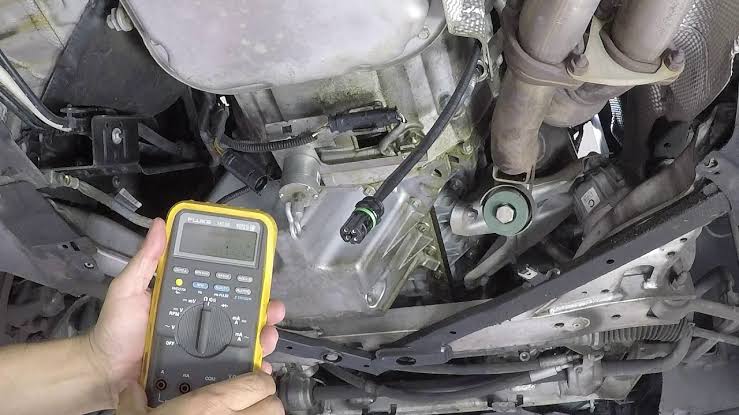Understanding the O2 Sensor in the BMW 328i
In the realm of luxury sedans, the BMW 328i holds a prestigious position, revered for its performance, style, and innovation. Within its sophisticated engine lies a critical component: the oxygen (O2) sensor. In this blog, we’ll delve into everything you need to know about the O2 sensor in the BMW 328i, including its function, types, common issues, maintenance tips, and replacement guidelines, to ensure your BMW’s engine operates at peak efficiency and performance.
Understanding the O2 Sensor in the BMW 328i
Function:
The oxygen sensor, often referred to as the O2 sensor, plays a crucial role in the engine management system by monitoring the amount of oxygen present in the exhaust gases. It measures the oxygen content to determine the air-fuel mixture ratio and provides feedback to the engine control unit (ECU) for optimal fuel delivery and emissions control.
Components:
The O2 sensor consists of a ceramic sensing element, typically made of zirconium dioxide, housed in a metal casing. It is located in the exhaust system, either upstream or downstream of the catalytic converter, depending on the vehicle’s configuration.
Types of O2 Sensors
Narrowband Sensors:
Narrowband O2 sensors are the most common type found in older vehicles, including the BMW 328i. They operate within a narrow range of air-fuel ratios, typically around the stoichiometric ratio (14.7:1), and provide feedback to the ECU for basic fuel control.
Wideband Sensors:
Wideband O2 sensors are more advanced and accurate than narrowband sensors, capable of measuring a wider range of air-fuel ratios with greater precision. They are commonly found in newer vehicles and high-performance applications, offering improved fuel efficiency and emissions control.
Common Issues with O2 Sensors
Check Engine Light:
A malfunctioning O2 sensor can trigger the check engine light (CEL) on the instrument panel. This is often due to sensor degradation, wiring issues, or contamination from oil or coolant leaks.
Poor Fuel Economy:
A faulty O2 sensor can cause the engine to run rich or lean, resulting in poor fuel economy and reduced performance. This can lead to increased fuel consumption and higher emissions.
Failed Emissions Test:
A failed O2 sensor can cause the vehicle to fail emissions testing, as it is unable to accurately measure and control exhaust emissions. This can result in fines or penalties and may require repairs to pass inspection.
Maintenance Tips for O2 Sensors
Regular Inspections:
Inspect the O2 sensor and its wiring harness regularly for signs of damage, corrosion, or contamination. Look for frayed wires, damaged connectors, or buildup of soot and debris on the sensor housing.
Proper Engine Maintenance:
Maintain proper engine tune-up and maintenance schedules to ensure optimal performance and longevity of the O2 sensor. Replace worn spark plugs, clean or replace air filters, and perform regular oil changes to prevent contamination of the sensor.
Use Quality Fuel:
Use high-quality fuel from reputable sources to minimize the risk of fuel system contamination and ensure accurate sensor readings. Avoid using fuel additives or octane boosters that may damage the O2 sensor or other engine components.
Replacement Guidelines for O2 Sensors
Signs for Replacement:
Replace the O2 sensor in your BMW 328i if you notice any of the following signs:
- Check engine light illuminated on the instrument panel
- Poor fuel economy or decreased engine performance
- Failed emissions test due to high emissions levels
- Rough idling or engine hesitation
Replacement Procedure:
- Locate the Sensor: The O2 sensor is located in the exhaust system, either upstream or downstream of the catalytic converter. Use a jack and jack stands to safely lift and support the vehicle for access.
- Disconnect the Wiring Harness: Unplug the electrical connector from the O2 sensor by pressing the release tab and gently pulling it apart. Be careful not to damage the wiring harness or connector.
- Remove the Sensor: Use an O2 sensor socket or wrench to loosen and remove the sensor from the exhaust pipe or manifold. Apply penetrating oil to the sensor threads if they are stuck or corroded.
- Install the New Sensor: Install the new O2 sensor into the exhaust pipe or manifold, ensuring it is seated properly and tightened to the manufacturer’s specifications. Reconnect the wiring harness to the sensor.
- Clear Error Codes: Use an OBD-II scanner to clear any stored error codes and reset the check engine light. Perform a test drive to verify proper sensor operation and ensure the check engine light remains off.
Conclusion
The O2 sensor is a vital component of the engine management system in the BMW 328i, ensuring optimal fuel delivery, emissions control, and engine performance. By understanding its function, recognizing common issues, following proper maintenance guidelines, and replacing worn sensors as needed, you can ensure that your BMW’s engine




Post Comment